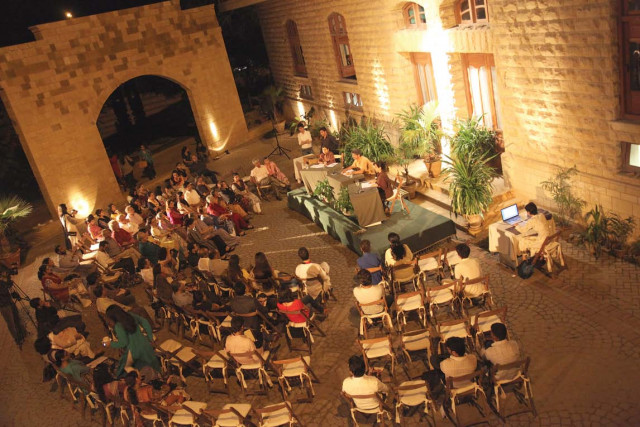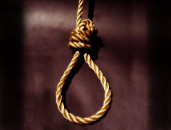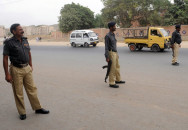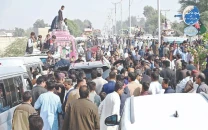With paan daans and audio clips, CAP tries to make history easy
The footage of naval officers pushing Jinnah’s coffin was enough to make anyone cry.

A young man clasped his grandmother’s hand tightly as he walked through history with her. Dressed in a simple white cotton sari with her salt and pepper hair parted in the middle and wrapped in a loose bun, Roshan Jahan had tears in her eyes as she looked around the exhibition set up by the Citizens Archive of Pakistan (CAP).
Her hazel eyes crinkled at the memories it had conjured. “This exhibition has taken me back to the days when my family was in Hindustan,” she said. “It is almost as if nothing has changed.” With a grin on her face, she pointed towards an advertisement of an old beauty cream that reminded her of her youth. Overwhelmed with emotion, she walked away to have one last look at the exhibition set up at the Indus Valley School of Art and Architecture gallery.
Emotions were running high, elicited by graphic black, white and sepia photos, videos, a historical timeline from 1947 to 1971, covering each and every inch of the gallery.
Black and white images of Mohammad Ali Jinnah’s funeral faded in and out on an LCD screen while Mehmood Zaidi and Qutbuddin Aziz’s gruff voices discussed the last few hours of the burial. The footage of naval officers dressed in their finest and pushing Jinnah’s bier were enough to bring tears to even the driest eye.
A group of girls dressed in skinny jeans and red shoes were surprised to learn that on June 3, 1947, the British government had decide to divide the sub-continent into two sovereign states - Pakistan and India. A 16-year-old boy had no idea that on October 24, 1971, Pakistan defeated Spain (1-0) in the Hockey World Cup. “We have tried to make history exciting so that people of all ages can [use] the information,” said Alia Chughtai, one of the curators. “You can only move ahead and achieve success if you know your history and understand what mistakes were made.”
To make the show interactive, the curators had chosen photographs of the floods, student protests to remove Ayub Khan’s government, fashion shows and even advertisements. A paan daan and personal diaries belonging to Masooda Khatoon were also on display.
A cartoon published in The Hitavada on August 15, a magazine launched by Indian National Congress leader Gopal Krishna Gokhale in 1911, attracted a lot of attention. Titled, A Happy Ending, it showed Jinnah, Jawaharlal Nehru and Mahatma Gandhi carrying a coffin at a funeral procession of the British Raj.
The audio for S M Moin’s train journey from Amritsar to Lahore, evoked intense pain. He narrated the story about how difficult the journey had been - from robberies to vicious attacks.
CAP has organised the exhibition in collaboration with Vasl Artists and together they had transformed the gallery into a time capsule - from partition in 1947 to the 1971 war.
According to the deputy high commissioner of Bangladesh, Roohul Alam Siddiqui, the exhibition took him back on a journey through history.
Curator Sophia Balagamwala said that CAP had tried to promote history in an artistic manner. She added that they wanted the people to know what had happened in the past through visuals and oral histories. In order to help the younger generation understand more about their roots, they had selected audios for historical events such as the 1965 war, the formation of the All Pakistan Women’s Association and SM Moin’s journey to Lahore in 1947. To top it off, in order to get everyone in the patriotic spirit, national songs such as ‘Aye Watan ke Sajeelay Jawanoon’ by Noor Jehan were being played in the background.
On Wednesday, opening night, a dramatic reading was also organised by the Zambeel Group. They read a translation of Afshan Chaudhry’s Bengali play, ‘The Body’ and Masood Mufti’s ‘Tishnagi’.
According to Zambeel member Aasma Mundrawala, the narration and dramatic readings had the power to take people back in time and recreate what had happened. The nuanced readings were accompanied by cleverly interwoven sound effects.
The exhibition is set to last till November 24.
Published in The Express Tribune, November 4th, 2011.



















COMMENTS
Comments are moderated and generally will be posted if they are on-topic and not abusive.
For more information, please see our Comments FAQ